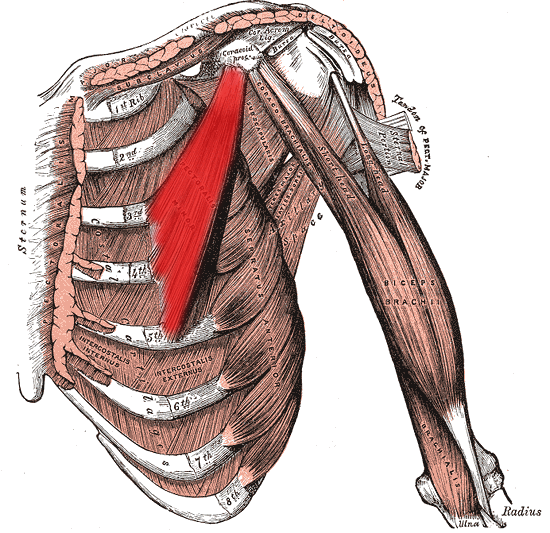Let’s move on and discuss about the muscles. Specifically, let’s start with the pectoral muscles.
The Four Pectoral Muscles are:
Watch and learn more about them in today’s episode here. Enjoy!
Watch the Video
Transcript of Today’s Episode
Hello and welcome to another episode of Interactive Biology TV where we’re making Biology fun. My name is Leslie Samuel. In this video, I’m going to be answering one single question, “What are the four pectoral muscles?“
Pectoralis Major
The first one is pectoralis major. You can see it here in red. It’s the main muscle you think of when you think of the chest, “pec major”, pectoralis major.
Pectoralis Minor
Beneath the pectoralis major lies the pectoralis minor. In order to see that, you have to remove pectoralis major, and that is exactly what we’ve done in this picture here. We’ve removed pectoralis major, and now, you can see that there’s this muscle under it. That is pectoralis minor.
Subclavius
We also have another little muscle. This muscle is called subclavius as seen in red below. It goes from the first rib to the clavicle. We’ll talk about those details in a later video, but that is the third muscle.
Serratus Anterior
The last muscle, the fourth muscle is serratus anterior. You can see it here in red. It has these serrations. When you think about serrations, or a serrated knife, or a serrated blade, you think about a knife that has these little teeth and that’s what you see here. It has that serrated type of a feel. That’s serratus anterior.
So, pectoralis major, pectoralis minor, subclavius, and serratus anterior.
Understanding the Origins and Insertions of Muscles – An Overview
I just want to give a quick overview of that so, we’re going to go into more details in later videos. But, before we go into those videos, I want to show you this picture.
What I want you to imagine, well, not imagine. I’m going to show you here… let’s put an “O” here and an “I” right here. That “O” is going to stand for “origin,” and this “I” is going to stand for “insertions.”
What I want you to picture, this part you can see, picture that this rope is attached to some object, which it is. That object, I don’t care what you want it to be. It can be a box. It can be a block. It can be a car if you want, whatever it is. But, just imagine that this is attached to that object.

What’s going to happen when she pulls on this rope (if she’s strong enough to move that car)?
Well, that object, whatever that object is, is going to move in the direction towards that point of origin. So, it’s moving from the insertion point to that point of origin, towards that point of origin.
This is what I want you to picture as we talk about the different muscles, their origins and insertions. I want you to picture that when that muscle is contracting. In general, what it’s going to do is it’s going to move the object at the point of attachment, at the point of insertion towards the point of origin.
That’s a simplified view. It gets more complicated than that because it goes at angles and all these different aspects that we need to take into consideration. But, in general, that is what I want you to picture.
In the next episodes…
As we move into those later videos, we’re going to talk about the origins of the muscles, the insertions, and the actions. We’re not going to talk about the arterial supply and the innervations as yet because we’re going to get to those in later videos.
That’s pretty much it for this video. If you would like more videos like this and all kinds of other resources to help make Biology fun, visit the website at interactive-biology.com.
This is Leslie Samuel. That’s it for this video and I’ll see you in the next one.





i have never seen anatomy like what you are showing me in every video,you can teach people like no other,it’s amazing
thank you so so much….